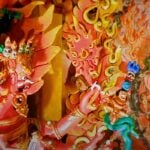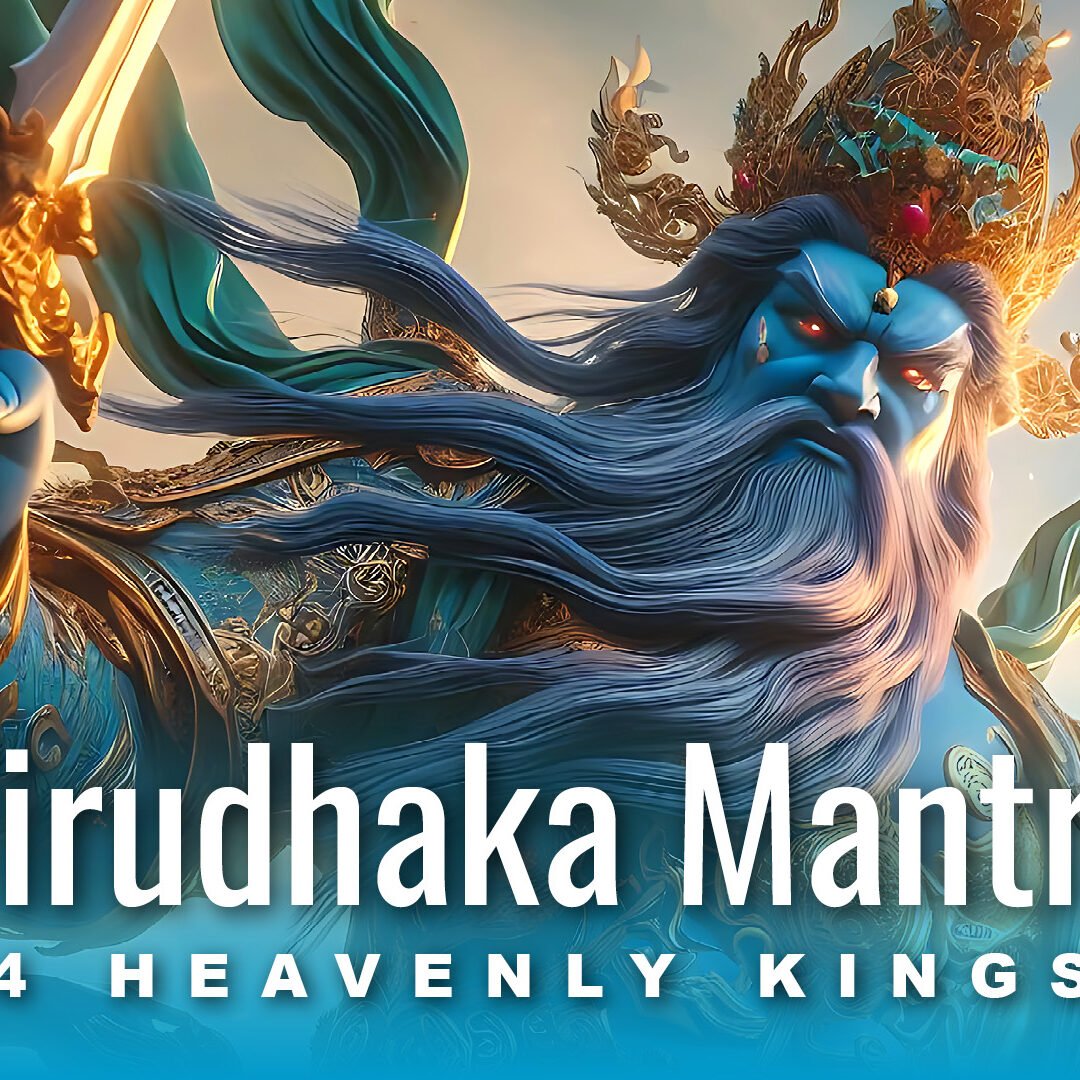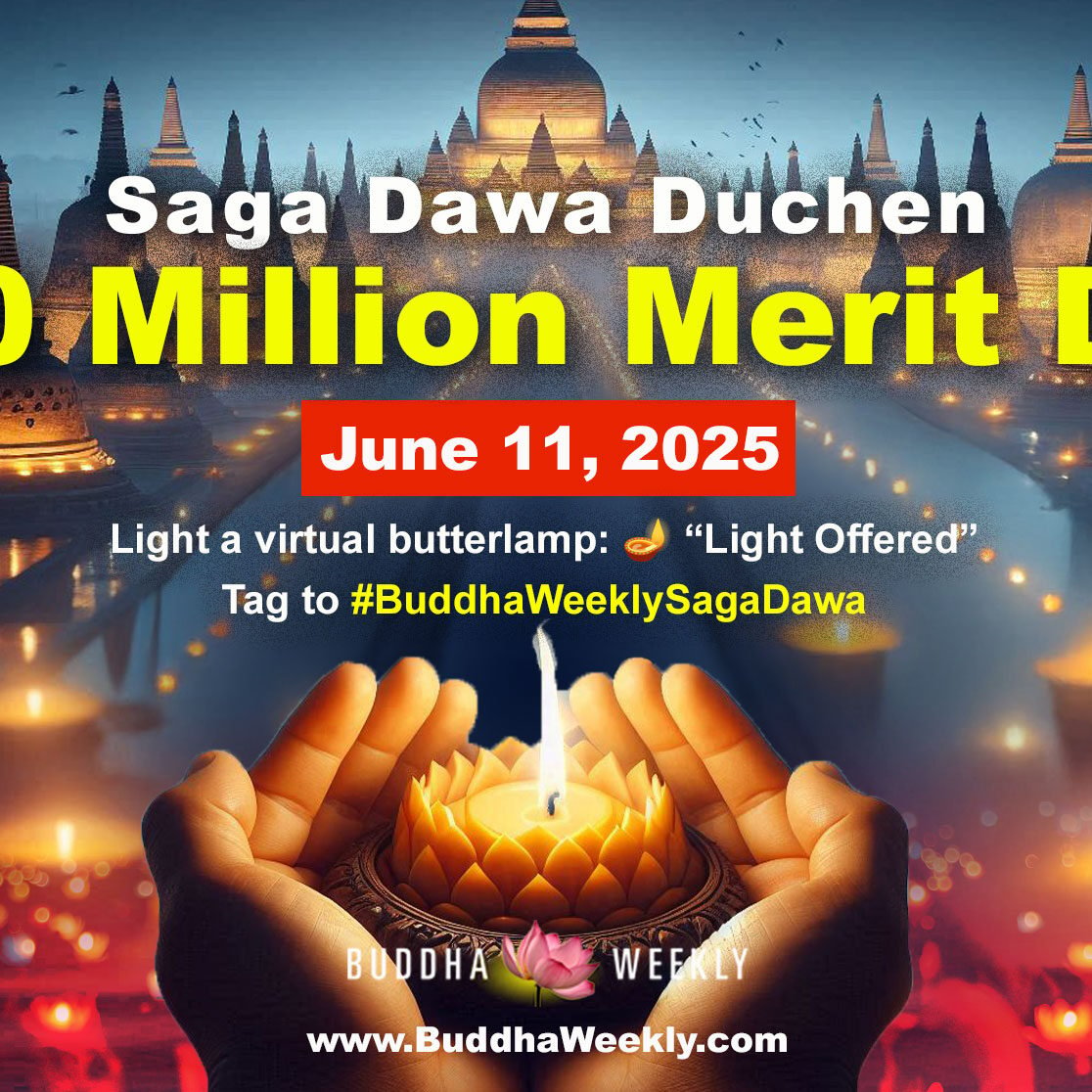Maha Vairochana, the Buddha of Light, Buddha of the Buddhas, Dharmakaya of Shakyamuni and all Buddhas
Long before Quantum Physics was even a “concept”, the Buddha of the vast Multiverse was Maha Vairochana. Two thousand years (or so) before the theories of Quantum Mechanics — and well before Marvel comics — Maha Vairochana already ruled over the boundless Multiverse. He is sometimes called the Buddha of all the Buddhas, and in Japanese he is called Dinichi Nyorai. In Vajrayana he is often called Vajradhara or Samantabhadra, other names for the primordial Buddha.
Video:
Maha Vairochana, whose name means Great Buddha of Light, is also boundless love and compassion. It is through his vast, unimaginable compassion that he emanates in countless Enlightened forms to help sentient beings in all worlds. His manifestations are as vast as the worlds in the multiverse. In the Brahmajala Sutra, he describes his symbolism this way:
On a thousand flowers surrounding Vairochana are a thousand Shahkyamuni Buddhas. Each flower supports a hundred million worlds; in each world a Shahkyamuni Buddha appears. All are seated beneath a Bodhi-tree, all simultaneously attain Buddhahood. All these innumerable Buddhas have Maha Vairochana as their original body.
Maha Vairochana Sutra
In the Maha Vairochana Sutra, Maha Vairochana teaches Vajrapani “how to become enlightened in this lifetime. He elaborately teaches on Bodhi-mind or Bodhichitta, compassion or karuna, and skillful means or upaya as the path.
Two of the skillful or expedient means taught in this vast sutra are visualization and mantra recitation, with an entire chapter dedicated to mandalas and visualizations and another to mantras, with hundreds of mantras written out for recitation.Vairochana’s own heart mantra, called the Mantra of Light, brings the shining light and love of Maha Vairochana into our lives.
Mantra of Light
Chanting the Mantra of Light is the same as chanting all the mantras of all the Buddhas at once, benefiting all sentient beings. The mantra, three times, is:
Oṃ amogha Vairochana mahāmudra maṇipadma jvāla pravarttaya hūṃ
Oṃ amogha Vairochana mahāmudra maṇipadma jvāla pravarttaya hūṃ
Oṃ amogha Vairochana mahāmudra maṇipadma jvāla pravarttaya hūṃ
For precise pronunciation in Sanskrit, watch for our feature video with the Mantra of Light. His shorter mantra is simply:
Om Vairochana Hum
Countless Forms of Maha Vairochana
When we visualize Maha Vairochana, although he has countless forms, he is most often thought of with one face, seated in meditation. He is pure white, like the pure glorious light of daylight. He is visualized as shining with light. He is glorious, peaceful, and glowing with the light of his compassion and wisdom. His white light is the combination of all colors — just as you see with a prism when you shine white light through the crystal.
Often, we visualize him at the center of the cosmic mandala of Dayani Buddhas. He is white, and the center of the mandala, the center of the universe, the source of all light and purity. From him emanate the four other Dhyani Buddhas, who are also shining with bodies of glorious light. In the east is Akshobya Buddha, blue in color, in the nature of light. In the south is golden Ratnasambhava Buddha. In the west is Amitabha Buddha, red in color. In the north is Green Amoghasiddhi.
Vairochana can appear in countless forms, from wrathful Ahchala to loving Samantabhadra to purifying Vajrasattva and everything in between. In his classic Dayani Buddha form, he has one face with hands held in the distinctive Dharmachakra Wheel-Turning Mudra.
He is also very popularly visualized in his four faced form, which also represents the four directions. In this form, he is white, glowing with light, has four faces, and holds a Dharma Wheel symbol in his two hands in the mudra of meditative equipose.
In another form he is standing, as in the famous 502 foot tall statue, the Spring Temple Buddha. In this form he is standing with one hand in the up in the gesture of bestowing refuge in the three jewels, and the other hand down in the classic Varada or granting wishes mudra.
In Japan, as the supreme Buddha, his characteristic gesture is the mudra of the six elements, in which the index finger of the left hand is clasped by the five fingers of the right. This symbolizes the uniting of the five elements of the material world, the earth, water, fire, air, and ether, with the spiritual or consciousness. This mudra indicates he is the supreme Buddha.
While Maha Vairochana’s appearance is peaceful, he can emanate in wrathful, semi-wrathful and active forms. The most famous of these is Achala, called Fudo Myoo in Japan. He is also visualized in the center of the mandala, like Vairochana, but surrounded by the ferocious aspects of the Dharani Buddhas. Achala’s mantra is called the Mantra of Compassionate Help, to indicate that the wrathful form of Vairochana is about compassionate activity and helping sentient beings with obstacles.
These two main aspects are universally popular in Shingon temples, a profound form of esoteric Vajrayana Buddhism. They are almost always together in temples, the balance of peaceful wisdom and contemplation together with active compassion and help. Commonly, the daily practice includes both the mantra of Light of Vai rochana and the mantra of compassionate help of Achala.
Although Maha Vairochana is in many Sutras, his most comprehensive teachings are in the Maha Vairochana Sutra. This is the ultimate go-to teaching on mantra, mandala and tantra generally. It explains why we need this practice; in a nutshell, because we are bound to the attachments of this Samsaric existence and need methods that help us break those binds.
This Sutra not only explains the why of almost everything in Vajra yana, it contains the mantras of virtually every Bodhisattva, Buddha and Enlightened Being. It is, quite literally, the “Indestructible” teaching of Vai rochana, and a guide for attaining Enlightenment in this lifetime. Chanting his mantra daily, and reading from this Sutra can plant the seeds to help ripen the Buddha Nature in all of us.
Oṃ amogha Vairochana mahāmudra maṇipadma jvāla pravarttaya hūṃ
ओं अमोघ वैरोचन महामुद्रा मणि पद्म ज्वाल प्रवर्त्तय हूं
More articles by this author
Search
Latest Features
Please support the "Spread the Dharma" mission as one of our heroic Dharma Supporting Members, or with a one-time donation.
Please Help Support the “Spread the Dharma” Mission!

Be a part of the noble mission as a supporting member or a patron, or a volunteer contributor of content.
The power of Dharma to help sentient beings, in part, lies in ensuring access to Buddha’s precious Dharma — the mission of Buddha Weekly. We can’t do it without you!
A non-profit association since 2007, Buddha Weekly published many feature articles, videos, and, podcasts. Please consider supporting the mission to preserve and “Spread the Dharma." Your support as either a patron or a supporting member helps defray the high costs of producing quality Dharma content. Thank you! Learn more here, or become one of our super karma heroes on Patreon.
Lee Kane
Author | Buddha Weekly
Lee Kane is the editor of Buddha Weekly, since 2007. His main focuses as a writer are mindfulness techniques, meditation, Dharma and Sutra commentaries, Buddhist practices, international perspectives and traditions, Vajrayana, Mahayana, Zen. He also covers various events.
Lee also contributes as a writer to various other online magazines and blogs.


















